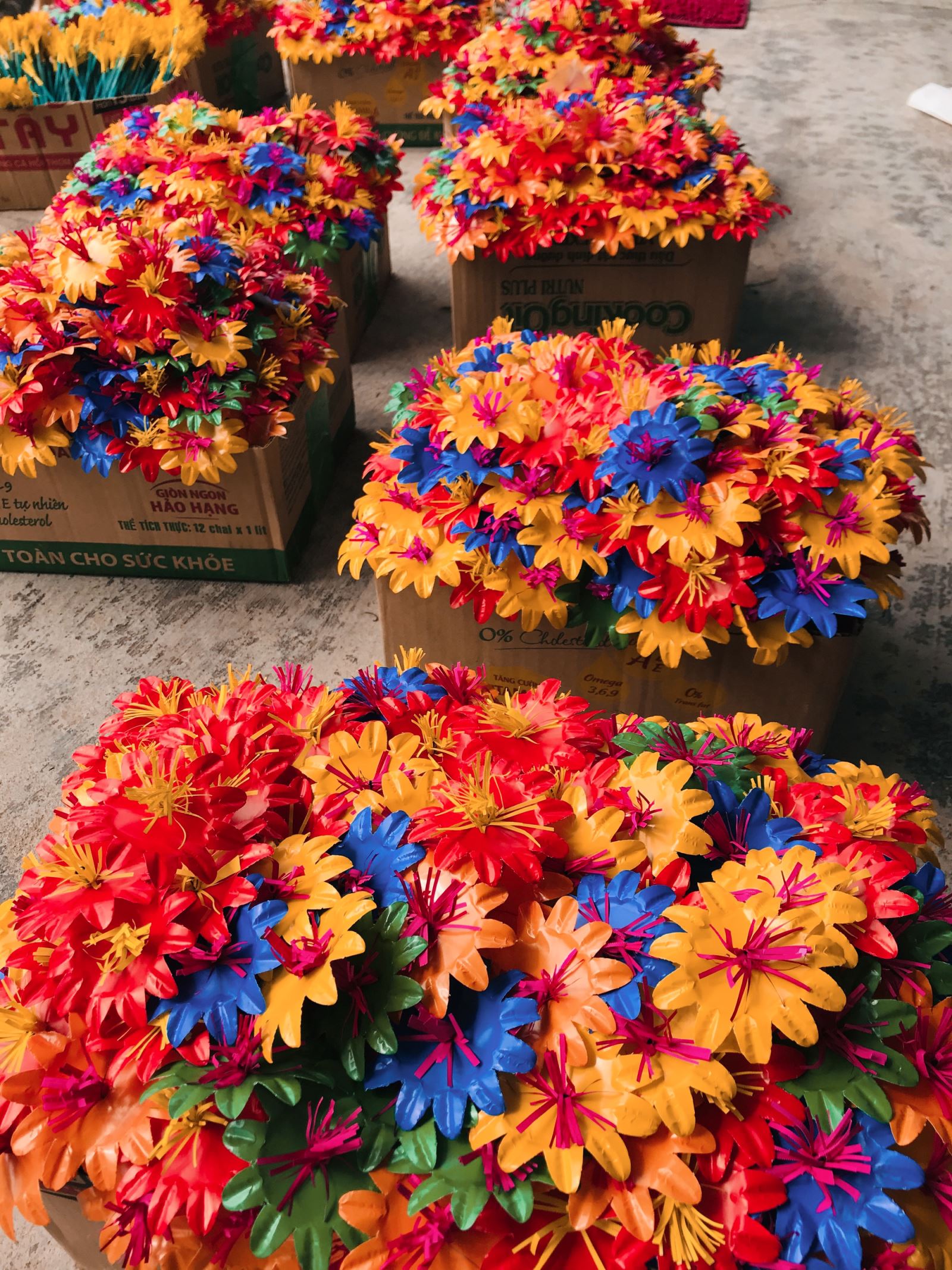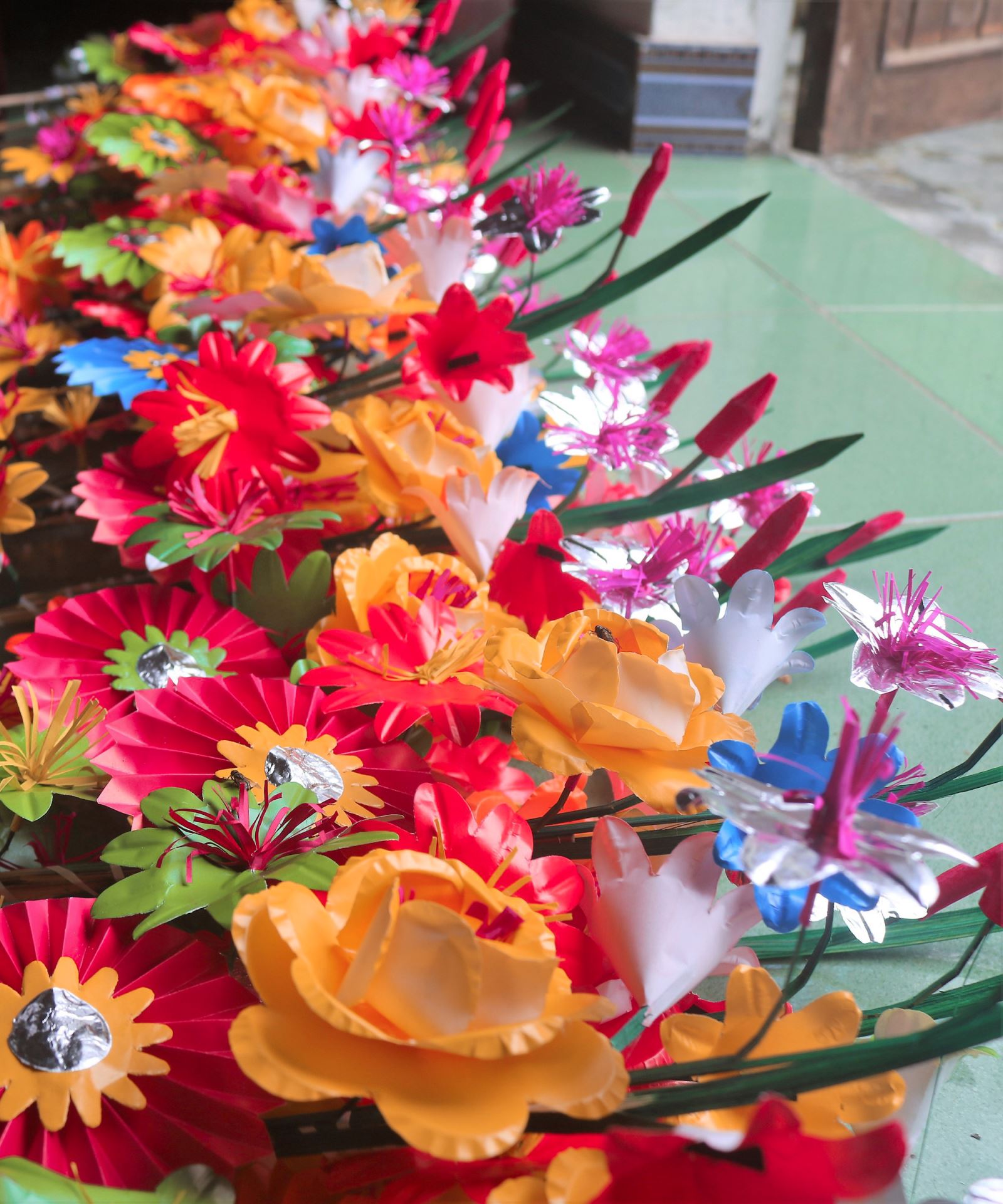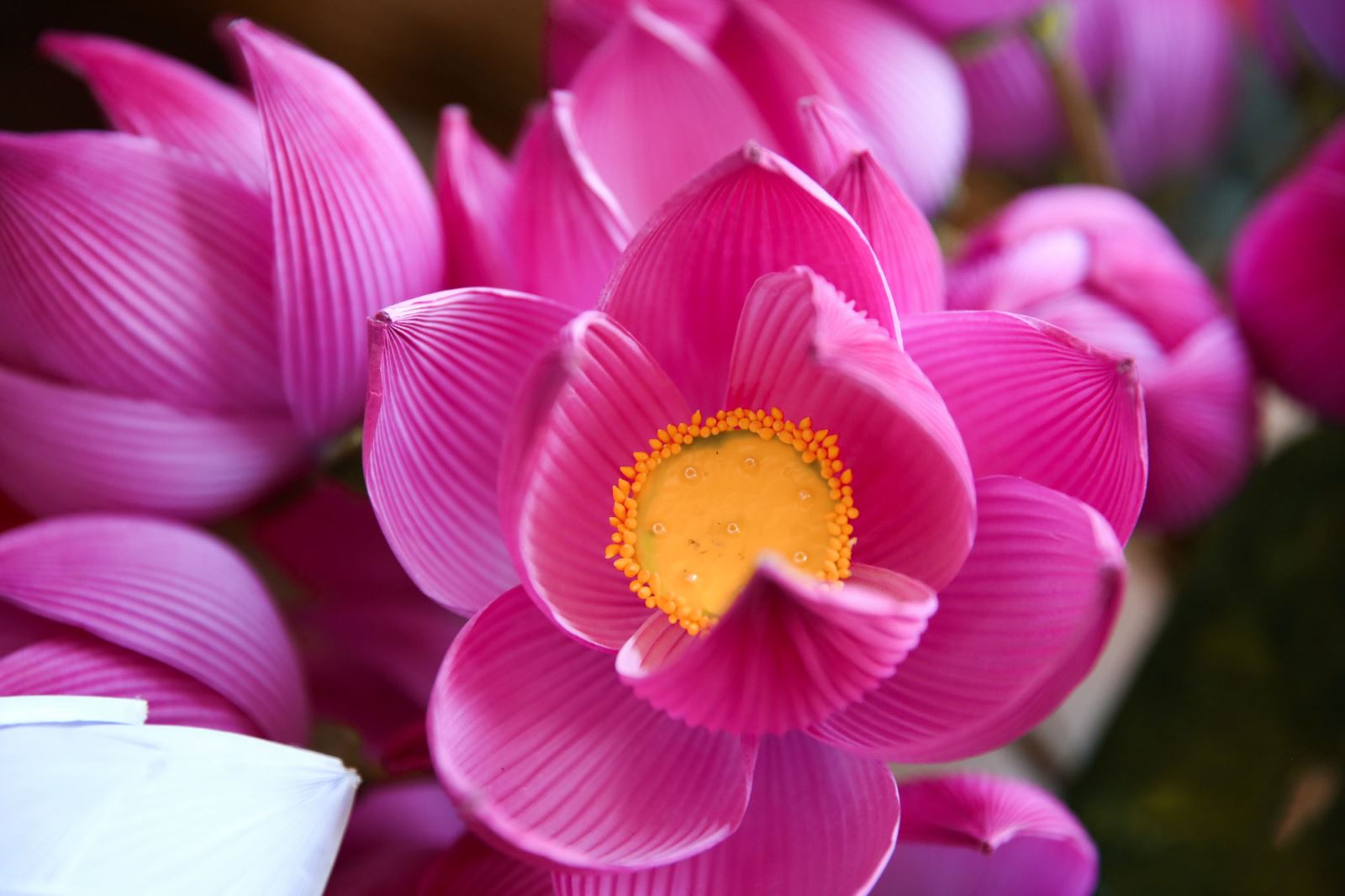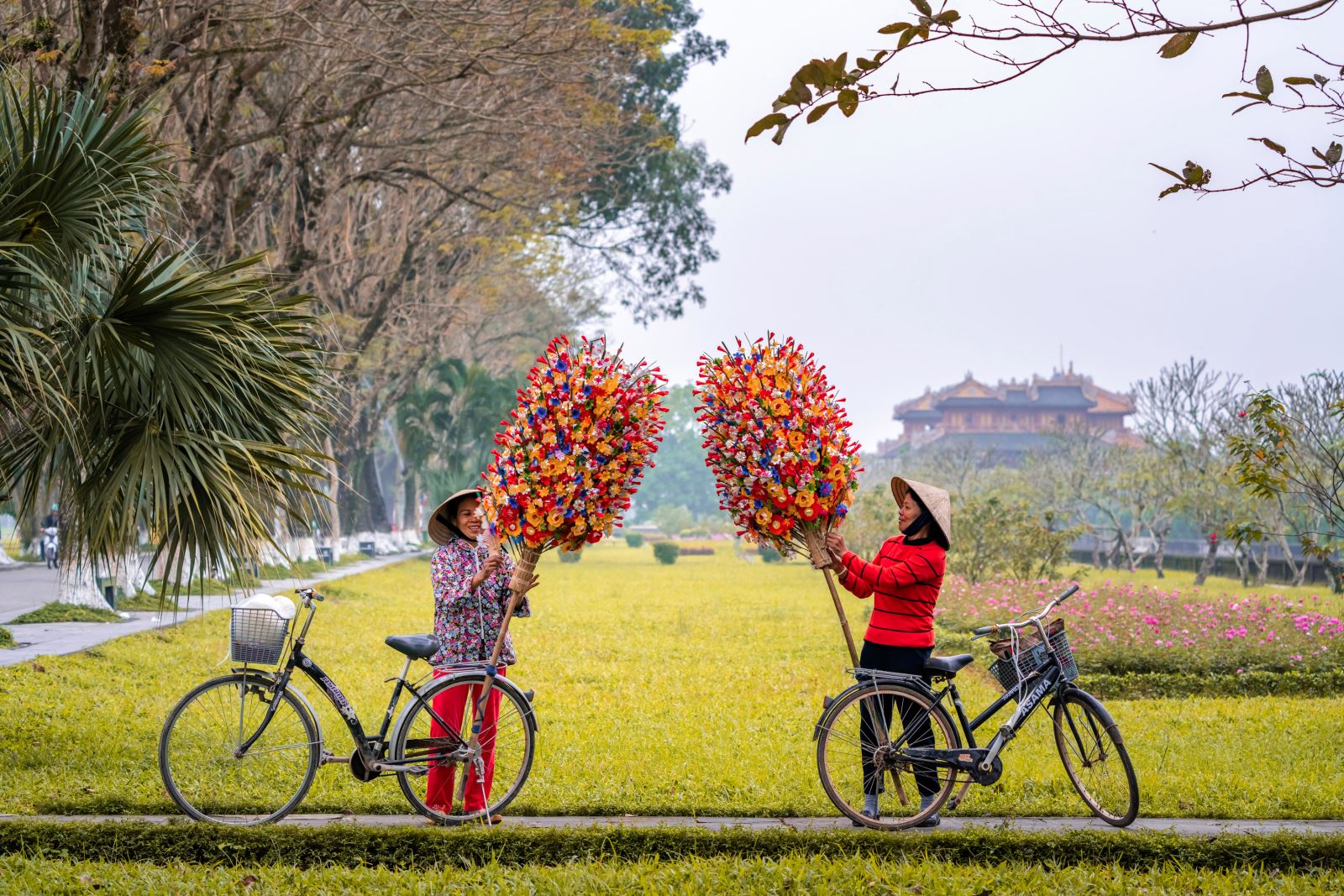
Thanh Tien Village (Phu Mau commune, Phu Vang district, Thua Thien – Hue province) is located on the south bank of the lower reaches of the Huong River, about 7 km from the center of Hue. Every time Tet comes to spring, from the beginning of the village to the end of the village, it is filled with hustle and bustle with confetti of all colors. On the winding village roads, Thanh Tien confetti trees are transported by bicycle, crossing long distances to the street to sell to urban people.
Since ancient times, the people of Hue have used Thanh Tien confetti to decorate sacred and solemn altars. Therefore, although it is "colorless and incense", this flower still holds a particularly important position in the beliefs of the people of the ancient capital. Through many ups and downs of the times, the craft of making confetti has been preserved by Thanh Tien villagers, passed down from generation to generation, and has existed for nearly 400 years.
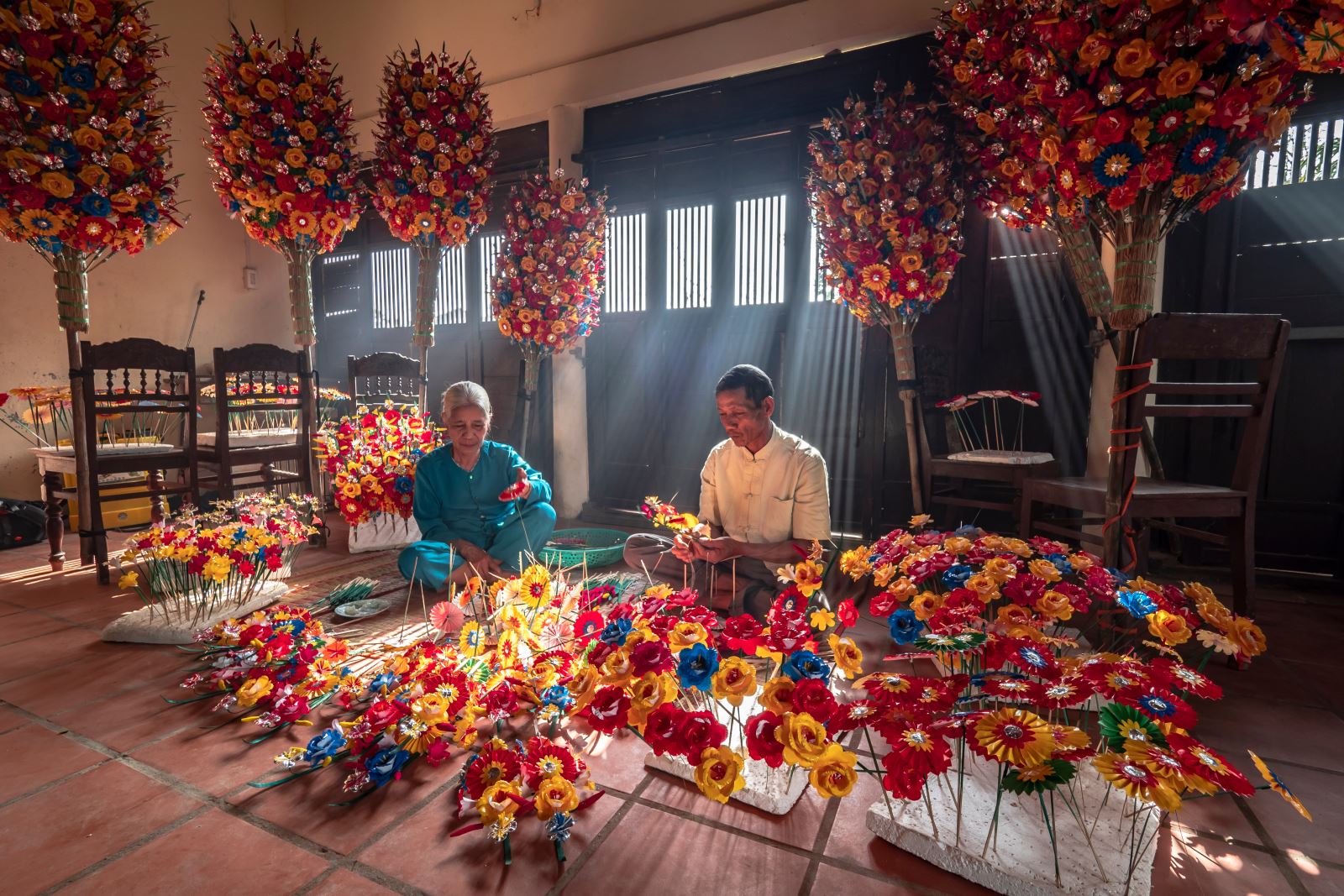
At first glance, Thanh Tien confetti seems very easy to make, but in fact, it is not so simple. To make a flower branch, the artisan must have ingenuity, mastery, a high aesthetic eye and patience to be able to produce beautiful and delicate products.
Since a few months before Hue entered the rainy season, the worker had to start the stage of preparing materials to make paper flowers. They choose good bamboo plants, split them into small pieces, thin shoots and then dry them to make flower stalks. Paper for making flowers is often dyed by the craftsman himself with colors prepared according to heirloom know-how. They do not use industrial chemicals, but use tree sap and leaves to make dyes. The color must be dyed so that it is somewhat dark and light. After dyeing paper, it must be placed in a dry position, less affected by nature, so that the color of the flower can be kept for up to 2-3 years.
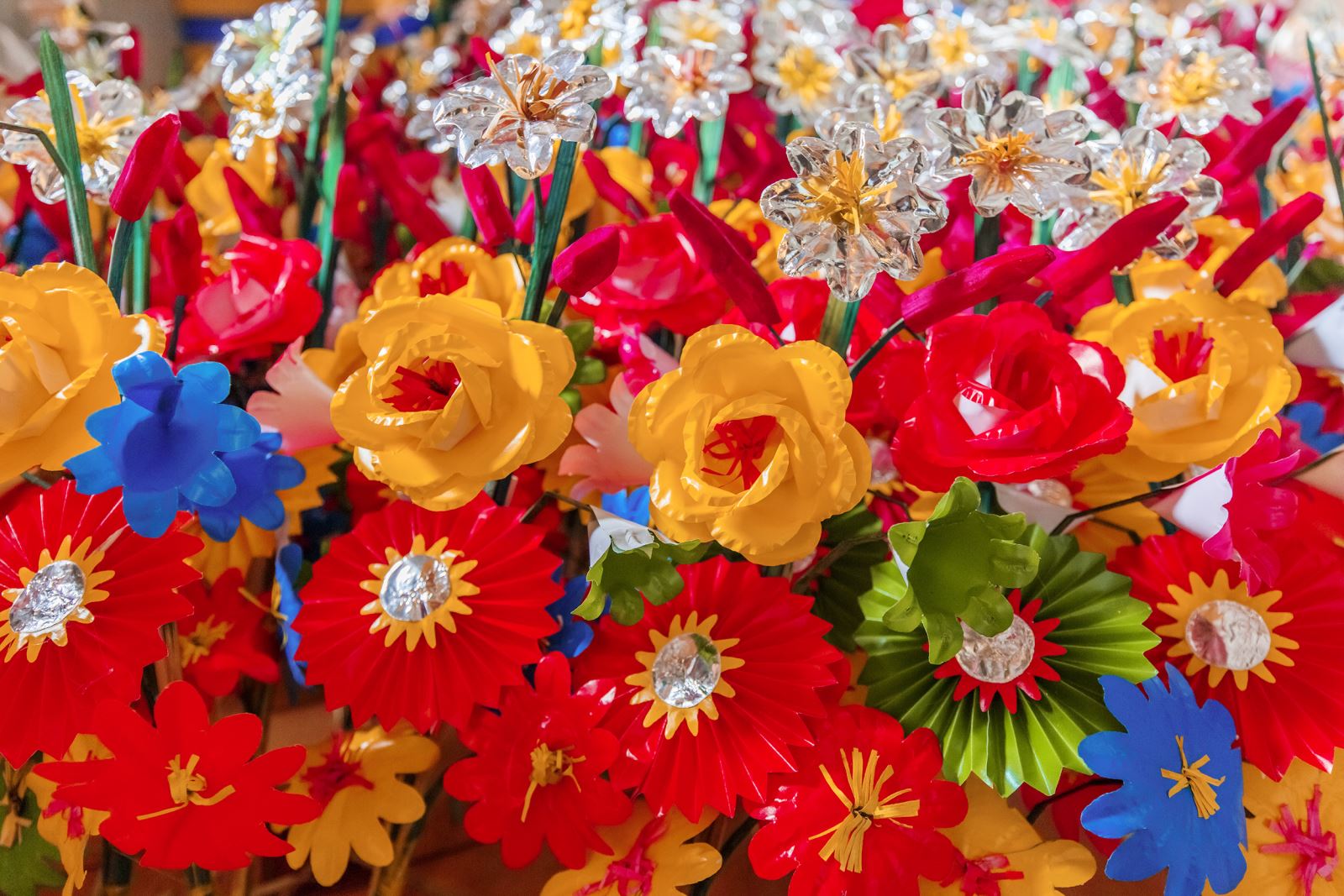
The basic confetti making process is carried out through 3 stages:
✽ Cut the paper in the shape of a flower, use a chisel to shape the leaves. Then fold and swipe to create a line, then dye and dry;
✽ Cut silver tin foil to make pistils (blanched burial), use bamboo as stalks (toothpicks) and bond cotton with flower branches (chong)
✽ Manipulate the tree (flower tree).
The most meticulous is probably the stage of creating folds for flowers. If the folds are uneven, the petals will be misaligned and the finished product will not be beautiful. Those who are proficient in making confetti can make about 20 flowers a day.

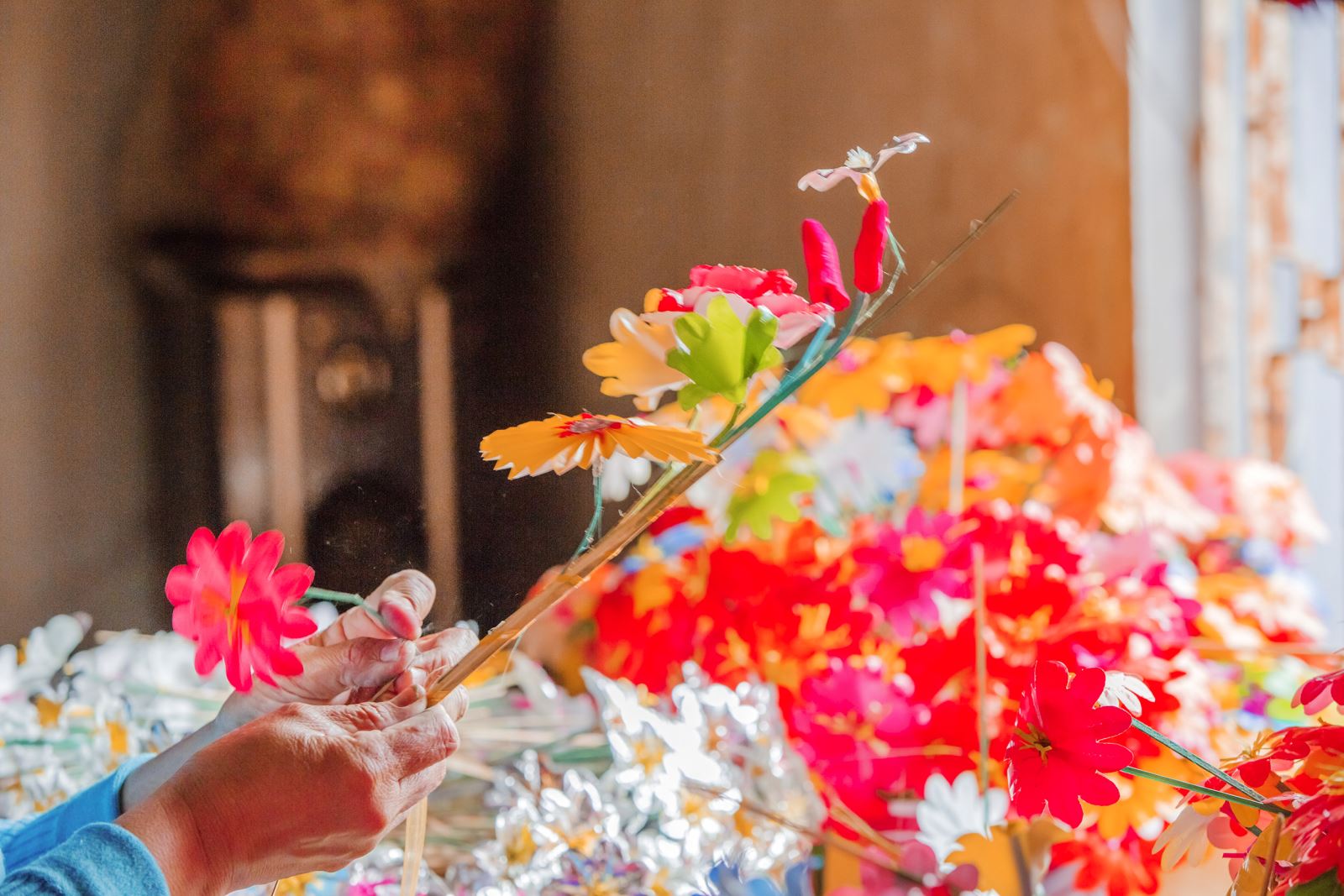
In addition to flowers: orchids, lilies, persimmons, chrysanthemums, wild anemones, wallflowers... which only serves the needs of worship and rituals and is only made during Tet, Thanh Tien village also makes more paper lotuses.
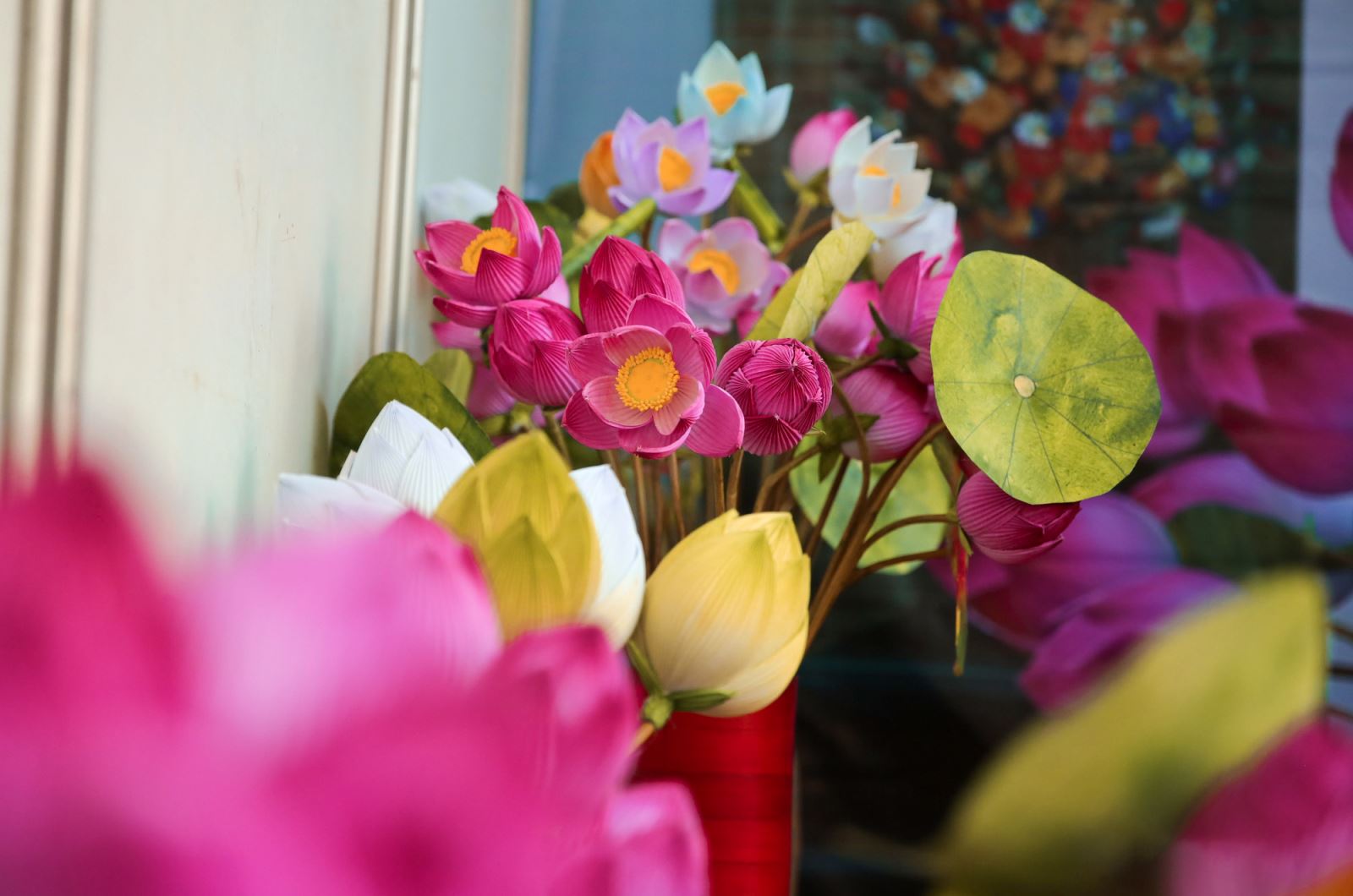
Every time on the occasion of worship, although they have bought a lot of fresh flowers, Hue people still do not forget to buy a few branches of confetti from Thanh Tien village to offer to the gods, ancestors, temples... Those bright but simple colors not only beautify the spiritual style, but also add to the uniqueness of Hue culture. Nowadays, tourists come to Hue on the occasion of the traditional craft village festival organized by the city every 2 years. In particular, Thanh Tien confetti village is an attractive tourist address for tourists to learn about the cultural life of a peaceful ancient village.
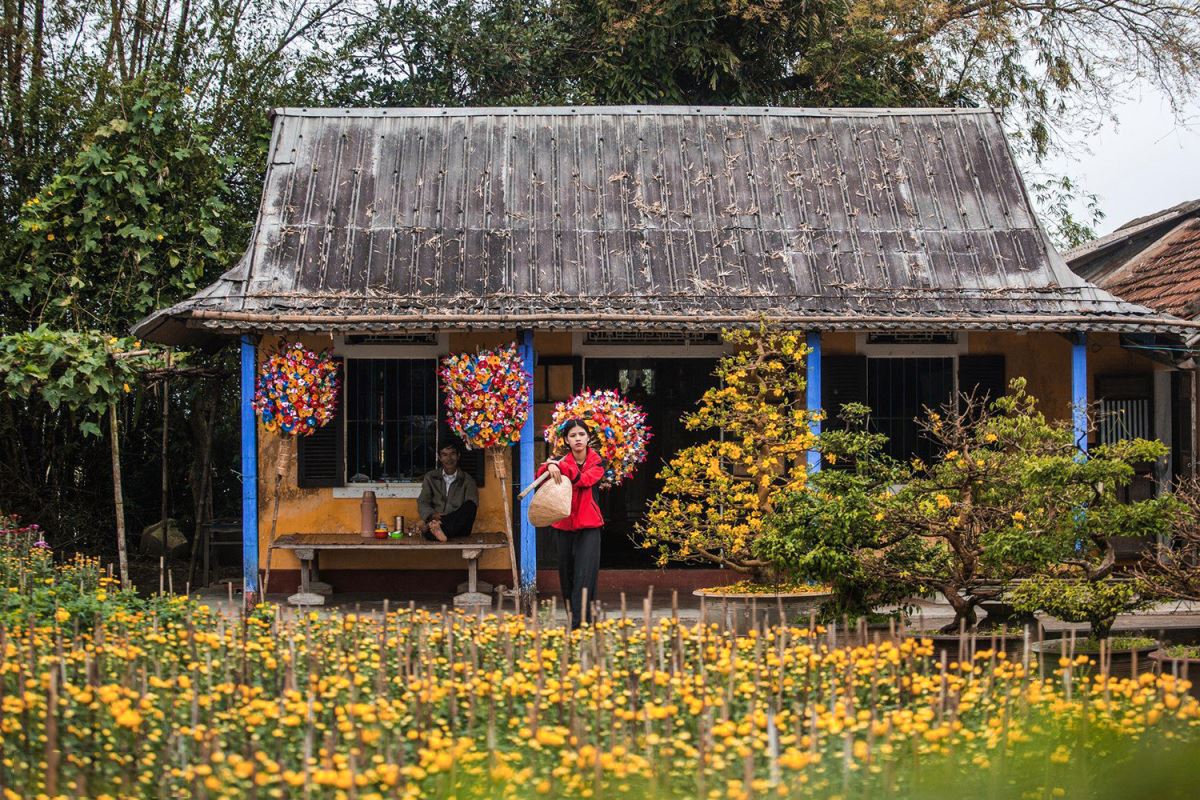
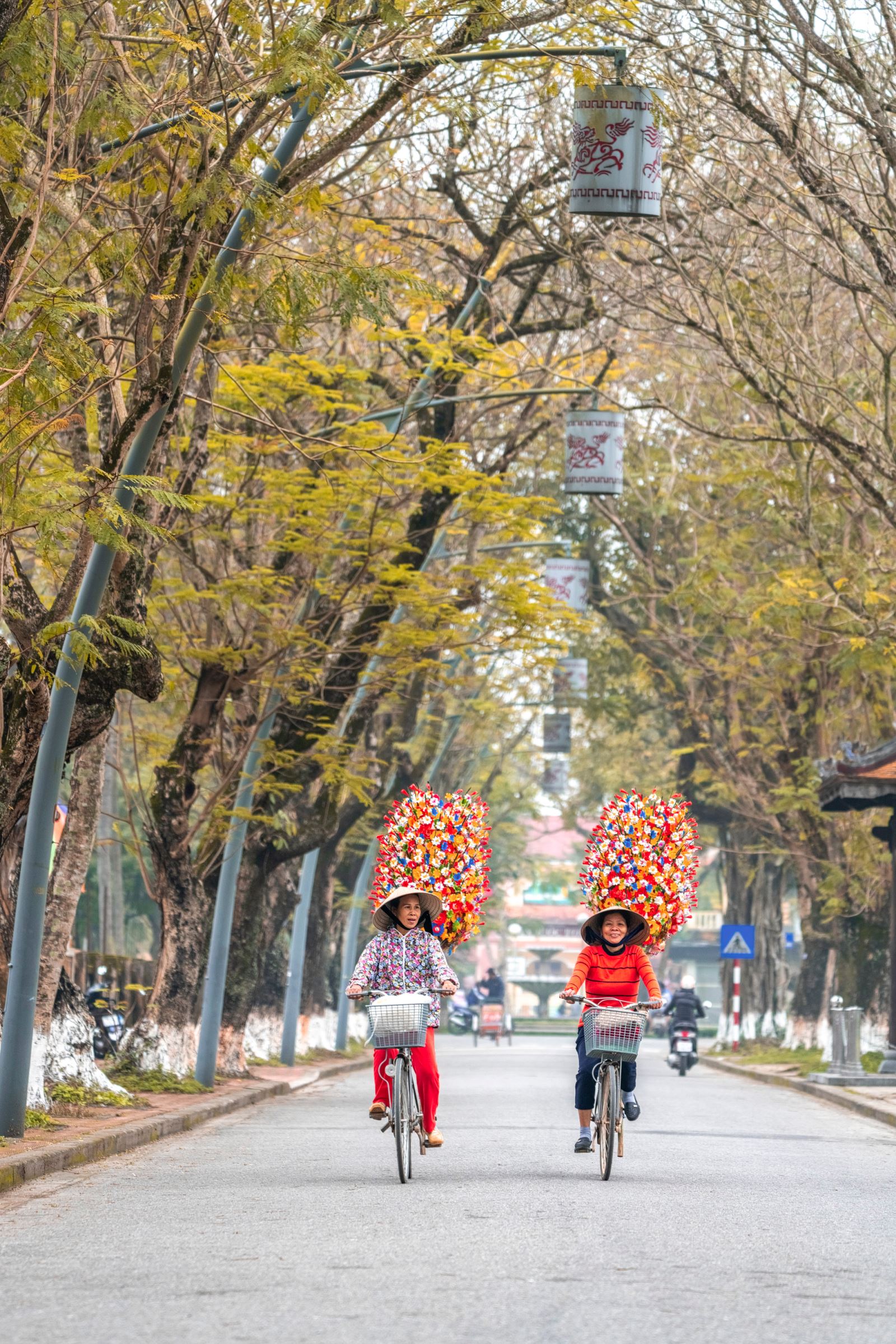
Photo: shutterstock, Fatherland
Synthetic Migo

